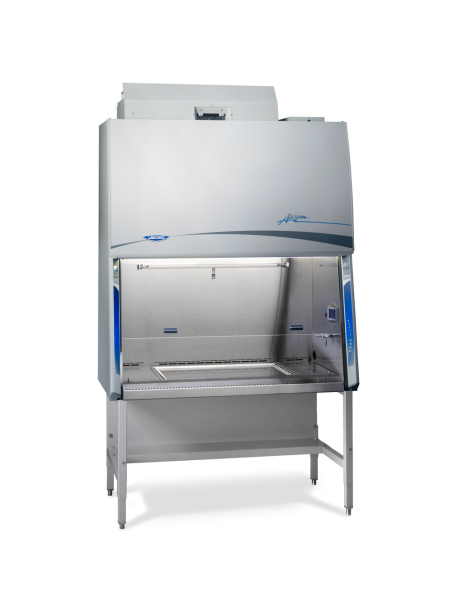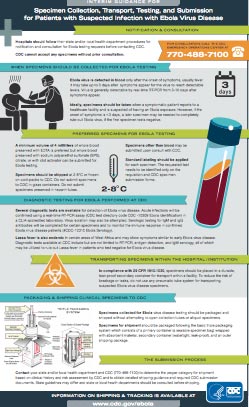Laboratory handling of the Ebola Hemorrhagic Fever Virus (EVD)
The current Ebola Virus Disease (EVD) outbreak is the largest since its discovery in 1976. Formerly known as Ebola Hemorrhagic Fever, the viral outbreak in West Africa has caused the World Health Organization (WHO) to declare a Public Health Emergency of International Concern. Furthermore, the International Federation of Biosafety Associations (IFBA) is working with member Biosafety groups, such as the American Biological Safety Association (ABSA) and regional organizations, to provide support in areas of infection.
Labconco has been fielding requests from laboratories and dealers alike for information. Our Biosafety Cabinet Product Manager was in direct contact with Paul Meechan, PH.D. – Director of the Office of Safety, Health and Environment at the Centers for Disease Control and Prevention (CDC). For high containment laboratories Dr. Meechan writes:
In a suit lab, we recommend using a Class II A2 cabinet. Since the staff are already in pressure suits, it becomes nearly impossible to use a Class III cabinet effectively. We actually vent them back into the lab, since the HEPA filters are suitably effective and we don’t use large quantities of toxic, volatile materials in a BSL4 Lab.
Most of the laboratories Labconco serves are not high containment, Biosafety Level (BSL) 4 Laboratories, but rather clinical and hospital testing facilities with, at the most, BSL 3 capabilities (when working towards Ebola or other highly infectious disease preparedness). For these scenarios, Dr. Meechan continues:
What to do if you don’t have a BSL4 lab? Most US hospitals won’t, and yet will need to run diagnostics. CDC has provided guidance on it–they basically tell labs to treat it like a bloodborne pathogen, with a slight enhancement. Clearly, you don’t want people trying to grow it out, but they can do PCR to positively identify it in a standard clinical lab setting.
He also suggests reviewing a wealth of information regarding healthcare practices for Ebola on the CDC website.
In addition, I would like to offer these concise resources from the CDC that will guide you to the information that most laboratory personnel who handle Ebola (or suspected Ebola) will need:
"Interim Guidance for Environmental Infection Control in Hospitals for Ebola Virus"
3 COMMON RECOMMENDATIONS:
- If in a BSL 4, a Class II BSC is suitable, and should be selected based on chemical usage just like any other Class II BSC.
- If not in a BSL 4, such as a hospital or clinical testing facility, follow the CDC/WHO guidelines for proper handling of Ebola (EVD)
- If outside the USA or West Africa, consult with the National Agency, Department, or Ministry of Public Health and/or WHO.
Resources:
| chevron_left | Choosing the correct Cold Trap for your CentriVap | Articles | 6 major differences between North American and European BSC design standards | chevron_right |







